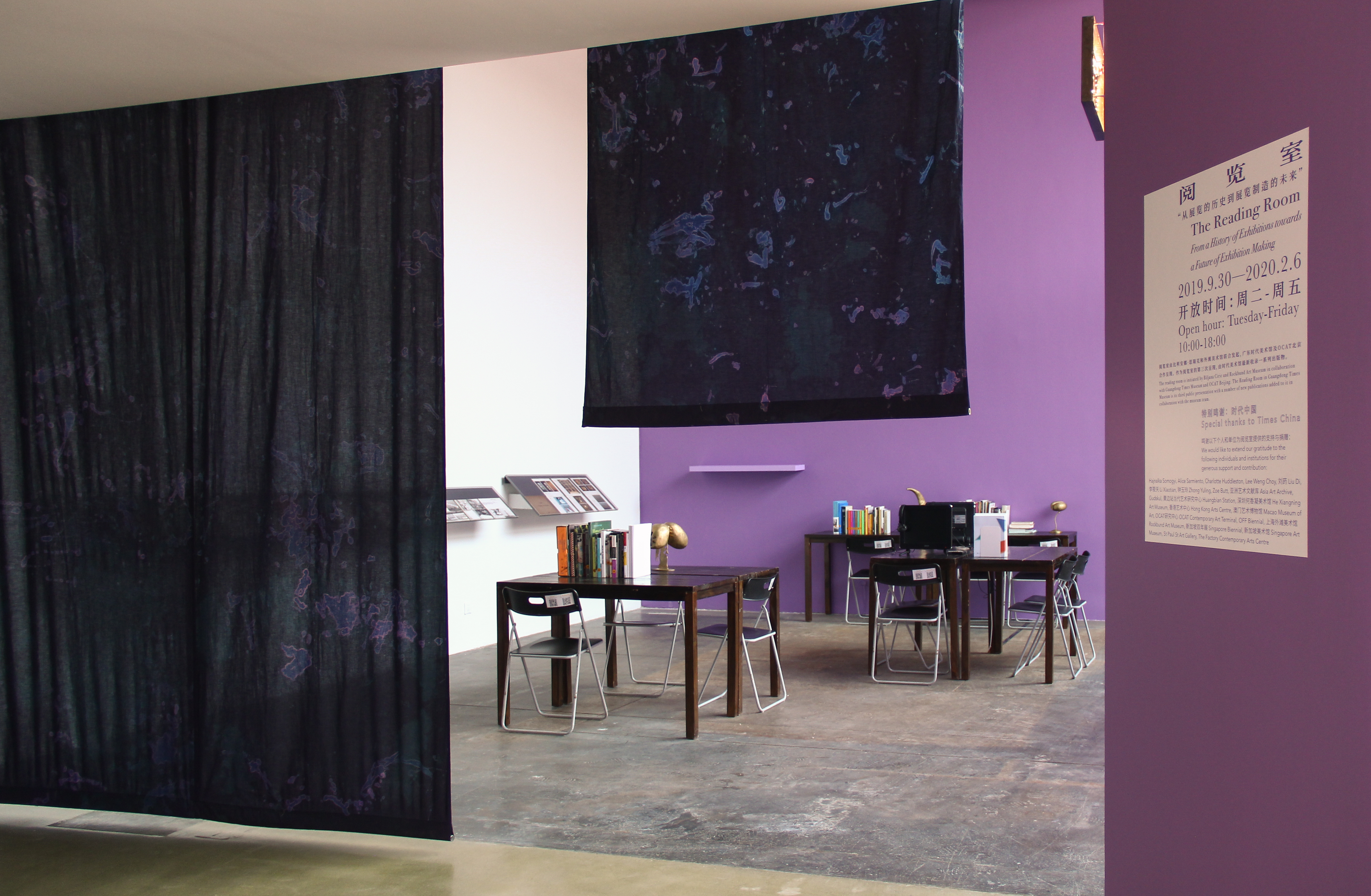
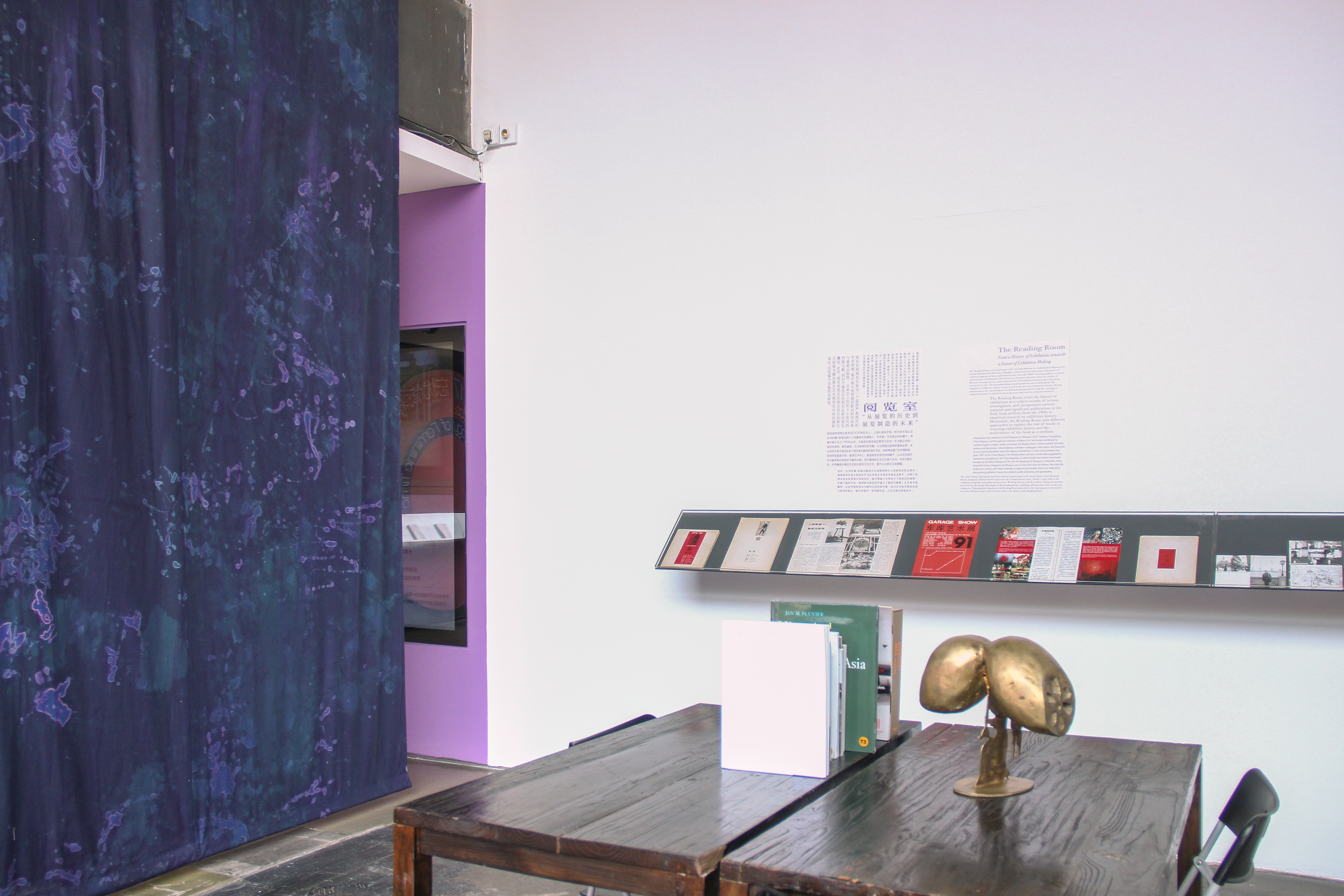
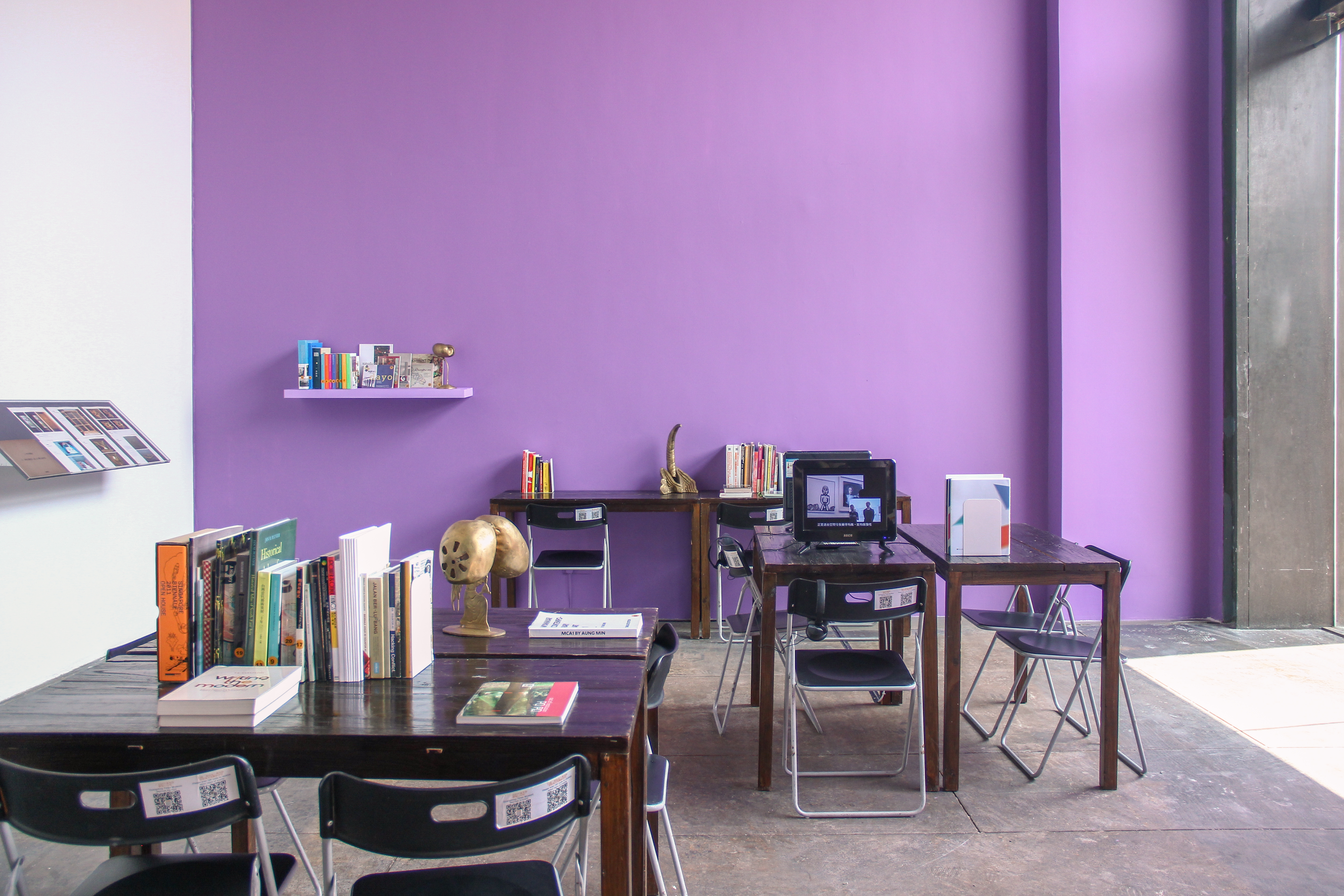
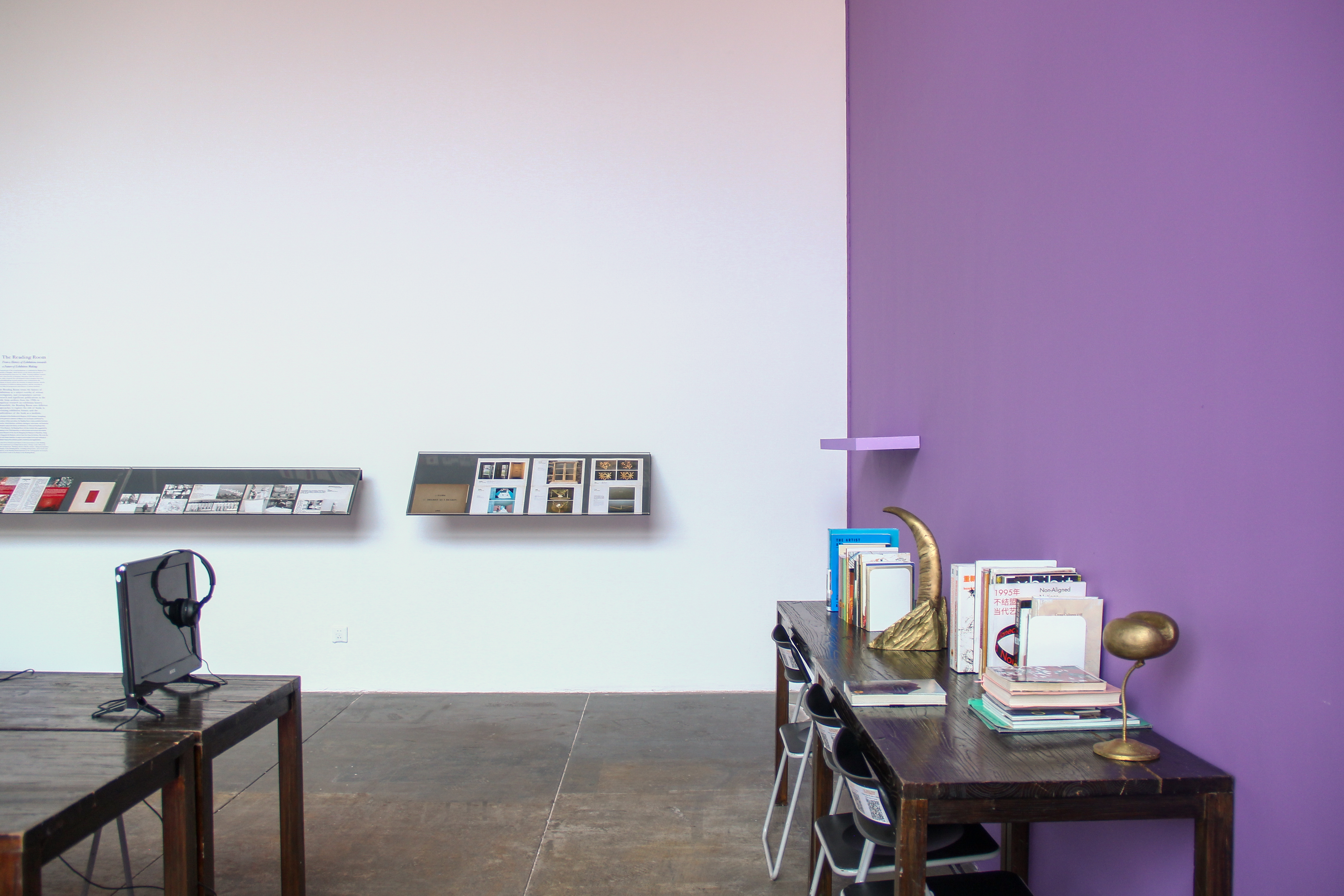
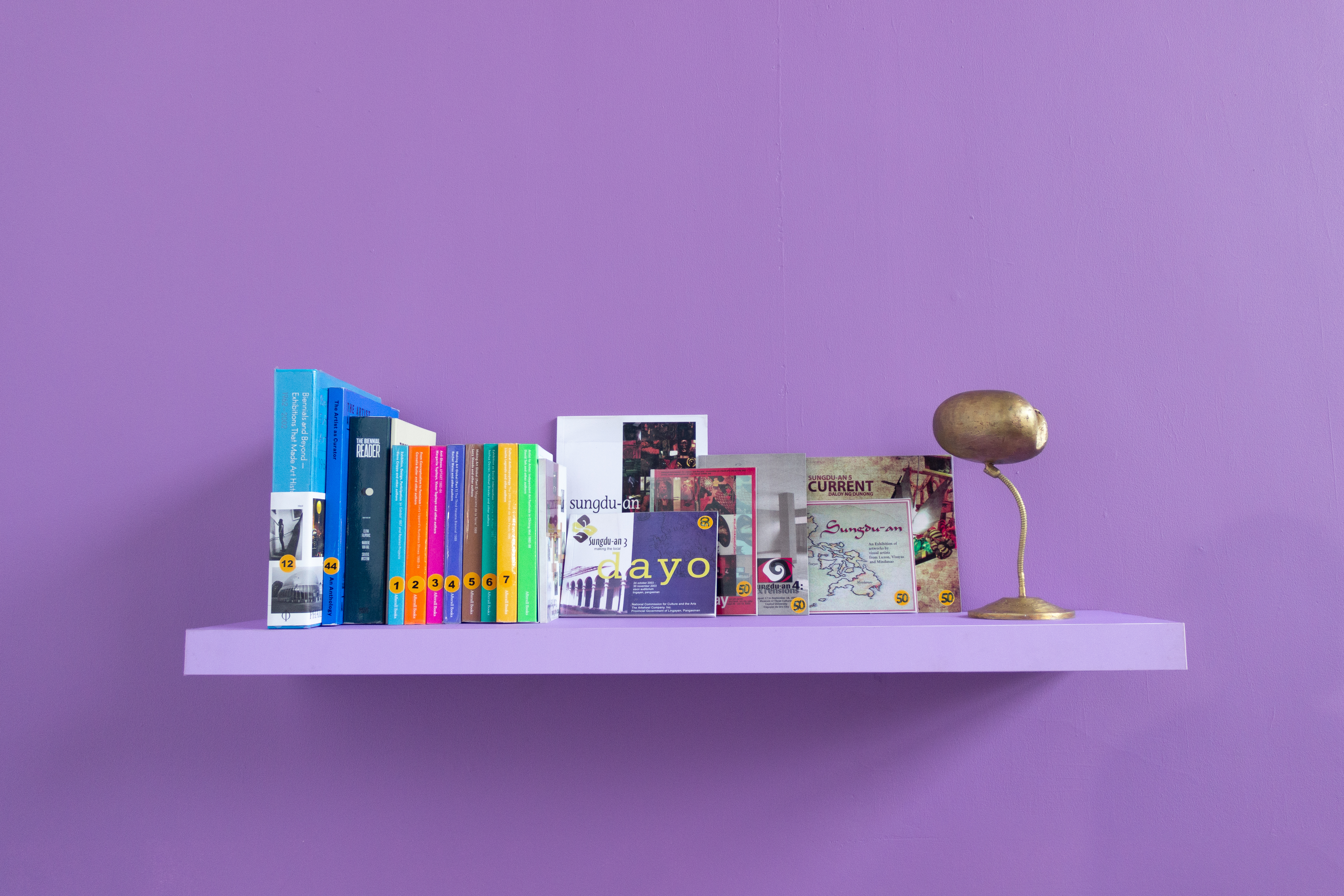

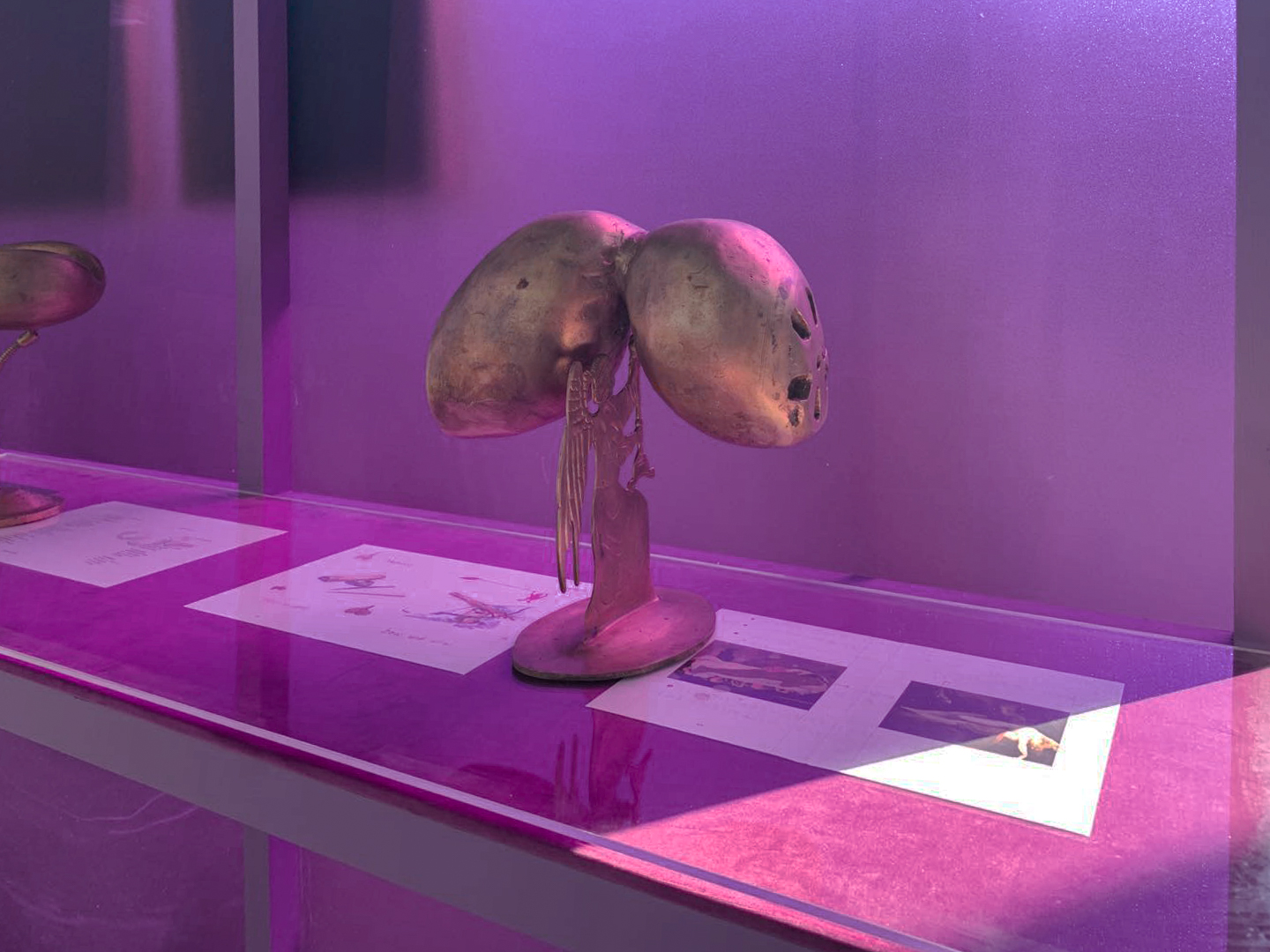
Reading Room, 2019.
Collabration with Biljana Ciric
Dates: 2019.09.30 - 2020.02.16
Venue:1F Banyan Commune
Add.:Times Museum, Times Rose Garden Phase III Huangbian North Road, N. Baiyun Avenue, Guangzhou
Website:http://www.timesmuseum.org/exhibition/view?id=166
Initiated by Biljana Ciric, From a History of Exhibitions Towards a Future of Exhibition-Making: The Third Assembly – Exhibition-Making Practices in China and Southeast Asia after 2000. Artist Cheng Tingting has been invited to intervene in the Reading Room’s presentation, introducing a critical reflection on the archive from the perspective of gender and the female body. Engaging with the gender disparity within the collected materials, Cheng will integrate self-portraits, artist books, and sculptural works into the space, addressing the invisibility of women’s labor in exhibition-making and archival preservation. Her work probes the ways in which historical records—and their omissions—reveal underlying structures of power, asking: Whose voices are archived? Whose bodies remain absent?
Drawing from failed utopias of past exhibitions and their aspirational, yet often exclusionary, promises, Cheng’s intervention reimagines the archive as a site of both erasure and speculative reconstruction. Through her engagement, the Reading Room does not simply present a history of exhibitions—it becomes a space for reckoning with what has been left out, and what can still be written into its future.
The Reading Room is an extension of the research initiative co-founded by Biljana Ciric and the Rockbund Art Museum in Shanghai, which critically examines exhibition-making practices in China and Southeast Asia since the 1990s. Much of the existing scholarship on exhibition history is grounded in Western art discourses, while self-initiated research projects in Asia remain scarce. This platform challenges dominant narratives, foregrounding localized practices and overlooked perspectives, while expanding the methodologies of exhibition historiography beyond institutionalized accounts.
Rather than treating exhibition history as a fixed chronology, the Reading Room approaches it as a contested terrain—where archives and documentation reflect both the possibilities and failures of exhibition-making as a utopian project. The materials on display—ranging from artist books and facsimiles of out-of-print publications to personal correspondences and critical literature—highlight the fragility of preservation, the limits of documentation, and the gaps in representation that persist within dominant art histories.
Dates: 2019.09.30 - 2020.02.16
Venue:1F Banyan Commune
Add.:Times Museum, Times Rose Garden Phase III Huangbian North Road, N. Baiyun Avenue, Guangzhou
Website:http://www.timesmuseum.org/exhibition/view?id=166
Initiated by Biljana Ciric, From a History of Exhibitions Towards a Future of Exhibition-Making: The Third Assembly – Exhibition-Making Practices in China and Southeast Asia after 2000. Artist Cheng Tingting has been invited to intervene in the Reading Room’s presentation, introducing a critical reflection on the archive from the perspective of gender and the female body. Engaging with the gender disparity within the collected materials, Cheng will integrate self-portraits, artist books, and sculptural works into the space, addressing the invisibility of women’s labor in exhibition-making and archival preservation. Her work probes the ways in which historical records—and their omissions—reveal underlying structures of power, asking: Whose voices are archived? Whose bodies remain absent?
Drawing from failed utopias of past exhibitions and their aspirational, yet often exclusionary, promises, Cheng’s intervention reimagines the archive as a site of both erasure and speculative reconstruction. Through her engagement, the Reading Room does not simply present a history of exhibitions—it becomes a space for reckoning with what has been left out, and what can still be written into its future.
The Reading Room is an extension of the research initiative co-founded by Biljana Ciric and the Rockbund Art Museum in Shanghai, which critically examines exhibition-making practices in China and Southeast Asia since the 1990s. Much of the existing scholarship on exhibition history is grounded in Western art discourses, while self-initiated research projects in Asia remain scarce. This platform challenges dominant narratives, foregrounding localized practices and overlooked perspectives, while expanding the methodologies of exhibition historiography beyond institutionalized accounts.
Rather than treating exhibition history as a fixed chronology, the Reading Room approaches it as a contested terrain—where archives and documentation reflect both the possibilities and failures of exhibition-making as a utopian project. The materials on display—ranging from artist books and facsimiles of out-of-print publications to personal correspondences and critical literature—highlight the fragility of preservation, the limits of documentation, and the gaps in representation that persist within dominant art histories.